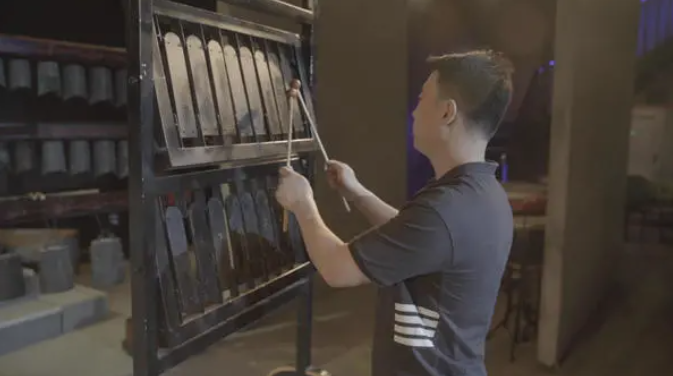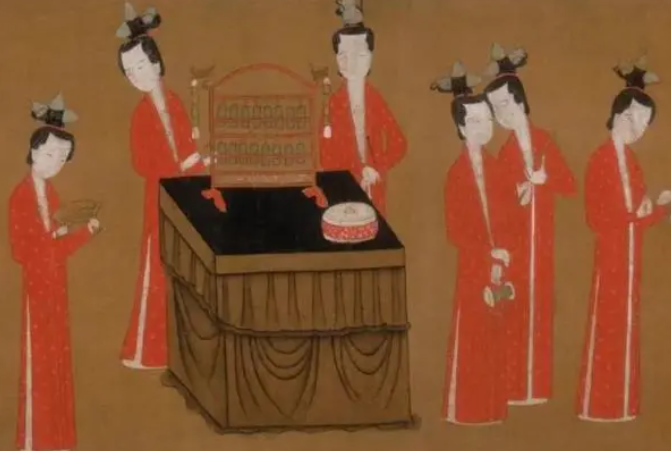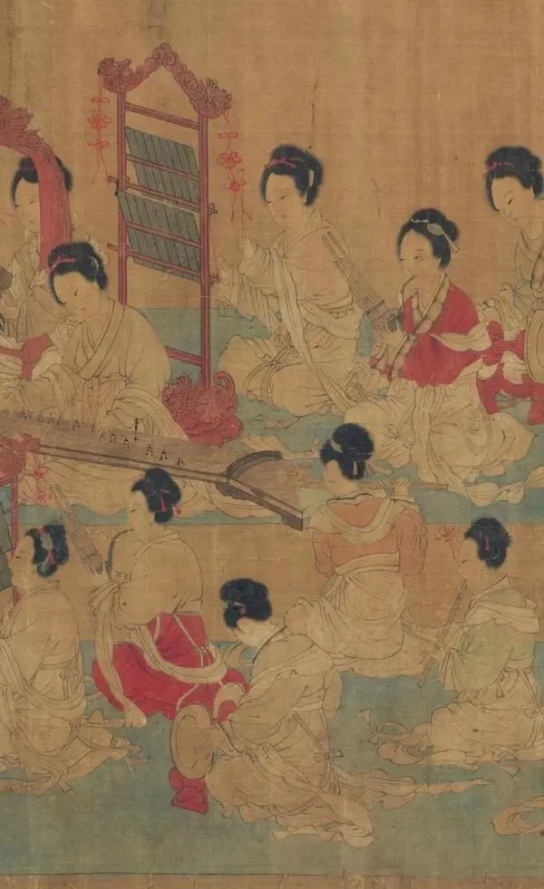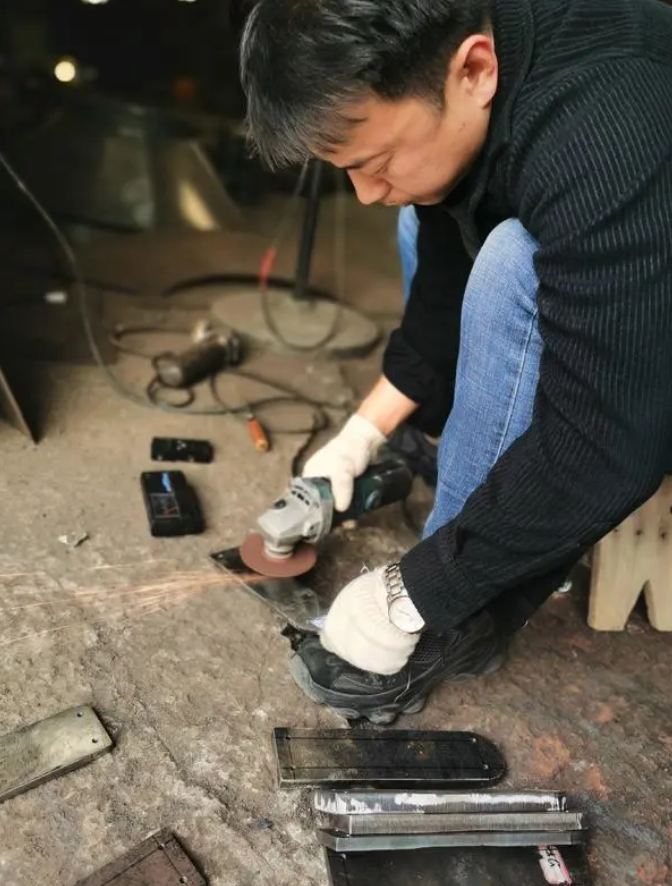Harry Potter theme song played by instruments 1400 years ago
"Who waved the wand and whispered the spell when the snowy owl flew over Hogwarts? Is your DNA moving?"
With the light tapping of the two small wooden hammers in the player's hand, the steel sheet on the wooden frame came out with notes, and an ethereal Harry Potter theme song "Hedway Variations" unfolded immediately, pulling the listener into the A magical world full of courage and dreams. The astonishing reverberation is like a wizard from the magical world falling into the world.

△Lin Sen live demonstration of Fang Xiang playing method
This is the first time for the Hedwig Variations to be arranged in ancient music style by the Huaxia Ancient Orchestra of Henan Museum. The small wooden hammer and steel plate in the hands of the performer are the "Fang Xiang", a traditional Chinese musical instrument that has just been successfully "restored" by the Huaxia Ancient Orchestra.
What exactly is Fang Xiang? Why can traditional Chinese musical instruments have a chemical reaction with Western music? What is the complicated process of "recovering" Fang Xiang? With questions, top journalists came to the Huaxia Ancient Orchestra for an interview.
"China's Fang Xiang is more than 1,200 years earlier than the Western celesta"
"Ah, ah, ah! I've liked "Harry Potter" for ten years, and it's a dream linkage, I love it." "Double chef ecstasy, it's a lifetime."
In the comments section of the Henan Museum's WeChat public account, everyone said so. Many people said that this was the first time they had heard of Fang Xiang's musical instrument.
In the performance hall of the Huaxia Ancient Orchestra, the reporter met Lin Sen, who is a national second-level performer and the principal percussionist of the Huaxia Ancient Orchestra. Although he is not tall, his perseverance reveals his dedication to music, and the sound of "recovery" came from his hands.
The Tang Dynasty poet Du Mu once wrote a poem to describe Fang Xiang: "Several autumn waters hang on the langgan, and the jade hands should be afraid of the cold at night. When the song is knocked three or four times in a row, I am afraid that tears will fall on the golden plate."
According to Lin Sen, who has successfully "restored" Fang Xiang, this poem describes it appropriately.

△Anonymous Song of Song Dynasty (Partial) Collection of Shanghai Museum
Lin Sen introduced that in ancient times, Fang Xiang was a musical instrument made of small rectangular iron, copper or jade pieces. There are 16 metal sound pieces in the conventional form, which are neatly suspended in two rows up and down, with eight pieces in each row. The performer uses a small hammer or a wooden hammer to percussion, which is often used in Yan music in the classroom.
Fang Xiang first appeared in the Liang Dynasty in the Northern and Southern Dynasties, and was widely used in the court and the people in the Tang and Song Dynasties. In the Yuan, Ming and Qing dynasties, with the popularity of Yuan Zaju and other operas, Fang Xiang gradually lost his market in the folk, but his status in the court increased slightly. For royal rites and music, it mainly played the role of replacing bells and chimes after the decline of chimes and chimes.
"The melody of "Hedwig Variations" is very ethereal, and it is very suitable for playing with the celesta, so naturally, it can also be played with a square sound." Lin Sen introduced that the western celesta was born in about 1886, and it is very similar to the square. The sound is very similar. "I don't know if there is communication between the two, but what is certain is that the way they play is also interoperable."
"The first time I saw Fang Xiang was in South Korea, they had it, but we didn't"
In Lin Sen's view, it is more appropriate to call it development rather than restoration.
"Strictly speaking, restoration requires a lot of work, not only the material is required to be exactly the same as the real square sound, but even the casting and polishing method of the sound board must respect the ancient method." Lin Sen said that our square sound is mainly for practical purposes. For playing, the sound board is cut with plasma, and the tuning is machined, so it should be called development.

△Five Dynasties Southern Tang Dynasty Zhou Wenju "Hele Tu" (part)
The first time Lin Sen met Fang Xiang was when he went to the National Academy of Korean Music for an exchange performance. Fang Xiang, who was placed next to the stage, made his eyes light up, "It's a good thing, but we don't have it."
After consulting a large amount of information, Lin Sen found that Fang Xiang was present in many records of ancient books and paintings.
For example, the Song Dynasty "Ge Le Tu" in the Shanghai Museum, a female musician is tapping Fang Xiang on the table; and Zhou Wenju's "He Le Tu" in the Southern Tang Dynasty of the Five Dynasties collected by the Art Institute of Chicago, the ladies. Among them, there are two musical instruments playing Fang Xiang; in addition, the "Old Tang Book: Musical Records" records the dimensions and order of Fang Xiang in detail.
Lin Sen believes that the difficulty in developing a sound is the selection of materials and tuning.
He told reporters that most of the fang chimes in ancient China were made of copper, while the fang chimes of the Korean National Music Institute were made of cast iron, while the fang chimes he developed used steel soundboards. "Which one has a good tone and which is easy to tune, I use which material. My purpose is to perform, so I chose the material that is more suitable for performance."

△Lin Sen is polishing the sound board
When the reporter asked, each sound board of Fang Xiang is the same size, why is there a difference in pitch? Lin Sen said that the thickness of each sound board is actually different. The thinner the sound board, the lower the scale, and vice versa. After the size is determined, it is polished. "Fang Xiang has a complete set of twelve temperaments, and all semitones are available, so the semitone sound board is not easy to polish, and it is easy to over-grind, so you can only replace it and start over. This is a process of exploration."
How similar is the Fang Xiang developed by Lin Sen to the real Fang Xiang in ancient times? He told reporters that the Forbidden City had a set of Fang Xiang from the Ming and Qing Dynasties, but he had never heard the sound of the Fang Xiang, so he could only guess based on his feeling, "About 80%, or even above."
"For Chinese ancient music to go out of the museum, it must first be based on the museum"
This time, the Henan Museum Huaxia Ancient Orchestra re-arranged and played the Harry Potter theme song, which quickly became popular on the Internet. Many people even expected the Huaxia Ancient Orchestra to release the download link as soon as possible to use it as a mobile phone ringtone.
In fact, this is not the first time that the Huaxia Ancient Orchestra has performed modern music with ancient instruments.

△ Fang Xiang in Dunhuang frescoes
Since the establishment of the Huaxia Ancient Orchestra 22 years ago, they have restored the bone flute from 8,000 years ago, the Taoxun from 5,000 years ago, the Longshan special chime from 4,000 years ago, the two-week qin, shengxiao, and the Tang Dynasty music Pipa and weave... More than 300 pieces of musical cultural relics traveled through time and space, playing the sounds of nature; in the past 22 years, the repertoire of the Huaxia Ancient Orchestra has also expanded from the pre-Qin period music, such as the Book of Songs and Music, to the Tang and Song Dynasties. The feast of the music as well as the modern music with classical style, such as "Qing Ping Le", "Hedwig Variations" and "Big Fish and Begonia".
With the advent of "Generation Z", how can traditional ancient music be liked by more and more young people? According to Yuan Jiayin, the publicity and academic director of the Huaxia Ancient Orchestra of the Henan Museum, when ancient music goes out of the museum, it must first be based on the museum, and it must be based on ancient musical relics and scores, and keep up with the times without losing the musical style and foundation Only by becoming a hot spot can it reflect the trend of traditional culture and be liked by more people.
"In the next step, we will do more work in this area, so that everyone can not only appreciate the beauty of ancient music, but also feel the combination of ancient music and modern civilization."
Ma Xiaolin, president of the Henan Museum, said in an interview with the media that the Henan Museum has a rich collection of music relics, and each musical instrument belongs to the top class of that era. "Let the cultural relics play music, let the cultural relics sing, and let the cultural relics dance, it is our original intention and dream to create the Huaxia Ancient Orchestra."
"Huaxia ancient music is an extension of the museum's exhibition. It extends from the exhibition hall to the stage for artistic interpretation, and shortens the distance between cultural relics and the public."
 渝公网安备 50010702504639号
渝公网安备 50010702504639号